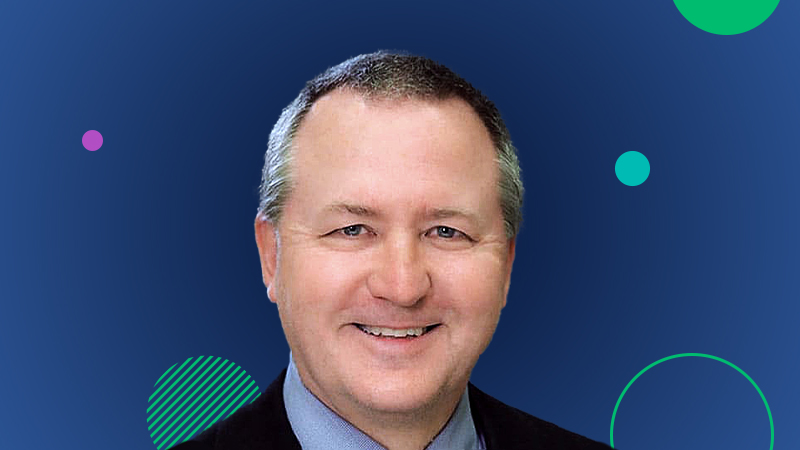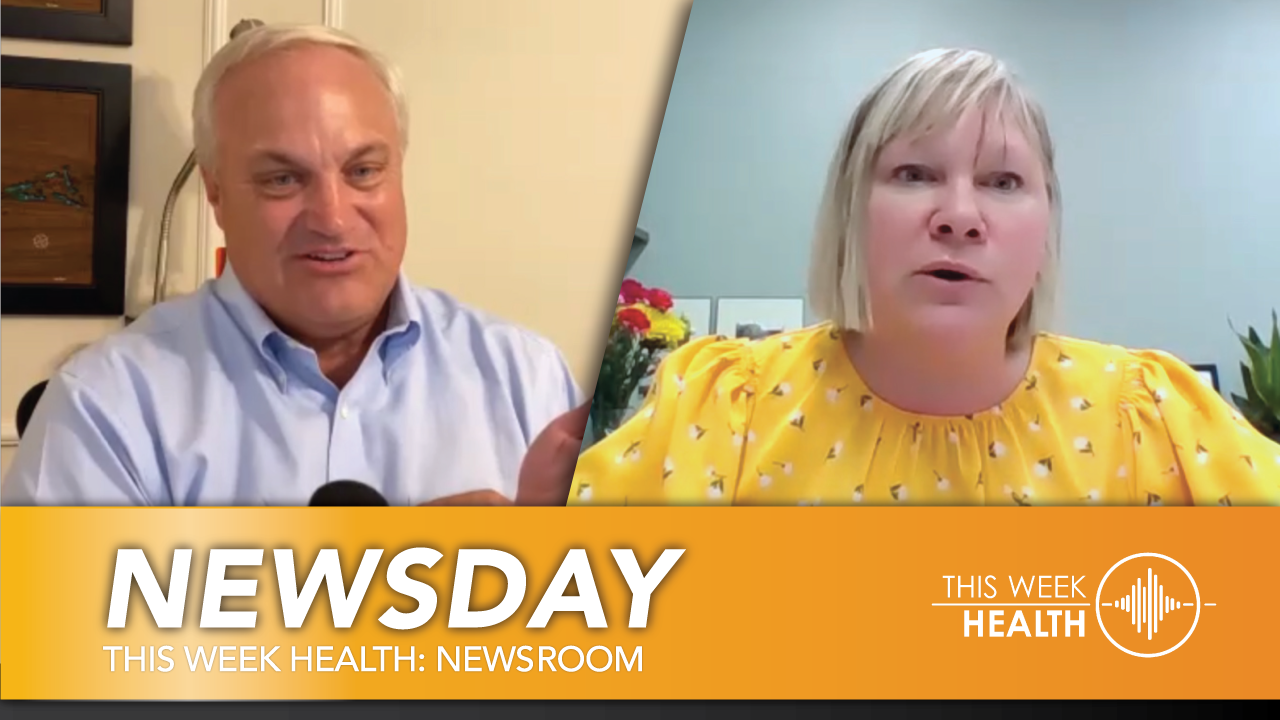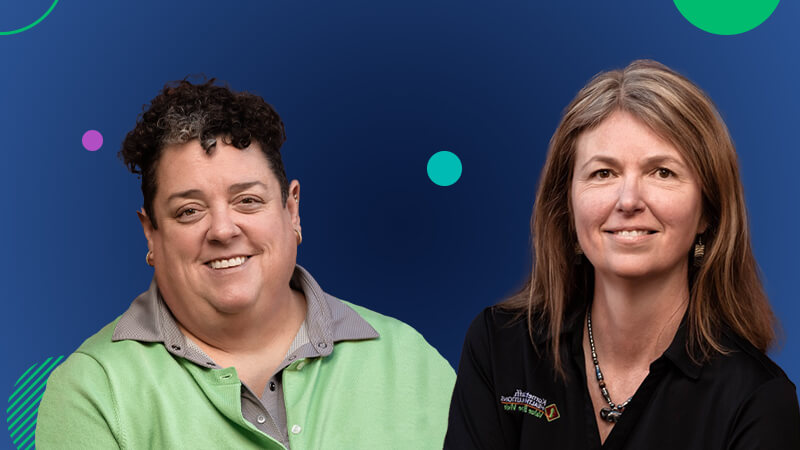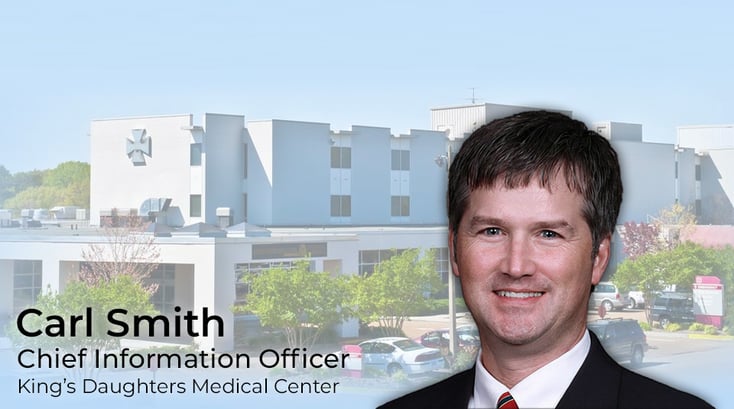
Earlier this year, Carl Smith, Chief Information Officer at King’s Daughters Medical Center (Brookhaven, MS), was recognized by the IT research and advisory company Info-Tech Research Group in their annual Info-Tech CIO Awards. We took the opportunity to discuss the significance of the award and Smith's approach to the deployment and use of health information technology generally.
Among the hundreds of CIOs across the country spanning industries, you were one of only 10 recipients in your category, and just 30 total, recognized by Info-Tech. What qualities do you think drew the attention of the award committee?
The CIO award was based solely on objective data that was scored and submitted to them by management and leaders at the respective facilities. Overall, It helps measure efficiency and best practice by looking at different areas of priority across the organization and how we’ve used technology, workflows, or processes to meet the needs of each area. It measures past performance, strategic planning, vision, and support. Each area may have different key priorities, as well as a different perception of where they feel the department or facility should focus resources. So, while it was certainly an honor for me to be named the recipient, it was really the performance of the organization that was being recognized.
Can you tell us what it’s been like to be a healthcare CIO in a small community during a worldwide pandemic? Are there any specific challenges you faced as an organization that you were able to help KDMC overcome by leveraging your role as CIO?
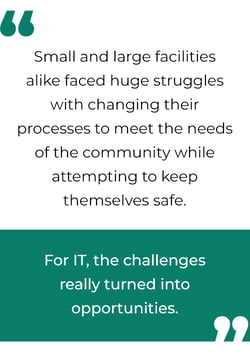
I don’t believe anyone was exempt from the pain and suffering that we’ve faced during this pandemic. Small and large facilities alike faced huge struggles with changing their processes to meet the needs of the community while attempting to keep themselves safe. For IT, the challenges really turned into opportunities. Every clinical setting across the country had to implement telehealth as a primary source of business in the ambulatory setting, as well as the inpatient setting in some areas. Security had to be ramped up to ensure that networks were safe. A remote workforce was no longer just for a few people with a laptop. It has now become a normal way of doing business and changed the way we think about staffing. As COVID-19 decreases, some of this will slowly migrate back to the way things were. But we’ve realized new opportunities to work better and smarter across the organization.
Recent earnings reports have shown that COVID-19 has taken a toll on many small to mid-sized organizations like yours, while some larger ones have fared better. How are you using technology to keep KDMC financially sustainable during this challenging period?
This continues to be a challenge for small to mid-sized rural hospitals. COVID has been a major disruption to our flow of business in regards to outpatient surgeries, patient volumes, and even routine visits to primary care providers. In many cases, patients have delayed care which has caused even more health problems within communities. Technology has played a key role in trying to become more efficient and provide resources for our staff and our community. Over the course of the past year, we have completely replaced our fiber infrastructure to higher speed fiber, and updated our infrastructure with new switches, firewalls, wireless, and other specifics to better handle remote connectivity and services. We’ve also implemented newer software technologies such as MEDITECH's Expanse Patient Care to make our workflows more efficient.
We understand that in addition to dealing with COVID-19, you were recently challenged by the severe cold weather that crippled Texas and other parts of the southern U.S. Can you tell us a little about this?
The oddities of 2020 certainly carried over into 2021. The pandemic, hurricanes, tornados, wildfires, and now a deep freeze and snow from Texas to Mississippi. This impacted us greatly in IT. As a department we could only staff about 20% on-site. Across the facility, we had to set up areas for staff to stay overnight because they could not get home. While I do not have IT staff that work remote on a permanent basis, they are all equipped to do so. For several days we basically ran an all-virtual department. We also set up new secure workstations for different staff members at their homes to be able to continue working productively.
COVID-19 notwithstanding, you and your organization have been very busy undertaking all sorts of large projects. Can you tell us about your philosophy on technology adoption generally, and your approach to rolling out new clinical software specifically? Software that requires workflow changes by clinicians is not always easy to roll out, but you do it very well. What’s your secret sauce?
You are correct that KDMC has been very proactive with new technologies, even during the COVID-19 pandemic. My philosophy on technology adoption has never been to simply stay in front of the competition with the “latest and greatest” gadgets or software. But if I can see immediate benefits and efficiencies without severely straining my resources, then I’m very interested. These benefits do not have to necessarily be immediate financial payback. It’s sometimes hard to measure the value of workflow efficiencies, or the mental impact that it has on the staff member. With the examples of MEDITECH’s Point of Care and Expanse Patient Care, we were able to take part in the design and build of these systems. While it wasn’t without its struggles, MEDITECH provided every resource needed to make these projects successful.
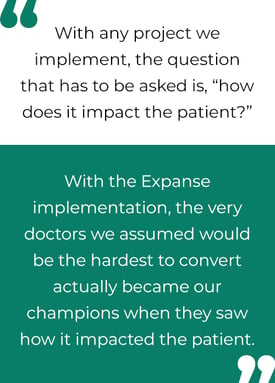
The secret sauce is a combination of things. Change Management is not an easy thing in any environment. The truth is that any organization that stays where they are is destined to fail. We must continue to challenge ourselves to be better than the day before. It starts with a focus on the patient and realizing we are here for them. With any project we implement, the question that has to be asked is, “how does it impact the patient?” With the Expanse implementation, the very doctors that we assumed would be the hardest to convert actually became our champions when they saw how it impacted the patient. Second, having a governance committee and leadership support is also a key. These are not simply IT projects. They are strategic initiatives that revolve around the mission of the organization, with support from the top down. Thirdly, that leads to vision and communication. These projects are not simply on impulse or the latest things seen at a conference vendor floor. They are all well-thought out solutions that are planned well in advance and discussed among those who will be impacted.
The last, but certainly not least, part of the secret sauce is people and culture. We’re not here to simply do a job. We’re here to make a difference in the lives of our community. It’s having purpose — something that’s bigger than ourselves. What we do brings satisfaction when we can see that it’s worthwhile. In IT, we may not be hands-on taking care of patients, but everything we do impacts the patient. Everything we do impacts the person that’s caring for the patient. Whether it’s test results flowing correctly, EHR screens being built, or wait times in the ER, we play a major role in making sure those things run smoothly.
What kinds of projects are on the horizon for you at KDMC?
We are looking at several potential projects revolving around our MEDITECH EHR which would include Business Clinical Analytics (BCA) as well as Ambulatory. We’re discussing optimizing our voice dictation, which could include the new Virtual Assistant tool. We’re examining new and innovative ways to improve the patient experience in the room. We are also finding new ways to be more efficient in IT with better support, infrastructure, redundancy, and security.
Finally, what are you most looking forward to when we get to the other side of this pandemic — both personally and for your organization?
On both fronts I would say it’s interaction. I miss the interaction with people. I miss the conferences and meetings. Virtual work certainly has its place and will not go away. But it doesn’t take the place of a handshake and face to face conversation. I am also on my third booking of a cruise vacation which I’m hoping to finally take in 2022.
Sign up for the 2021 Nurse Forum, featuring three outstanding keynote speakers and a host of valuable educational sessions.

